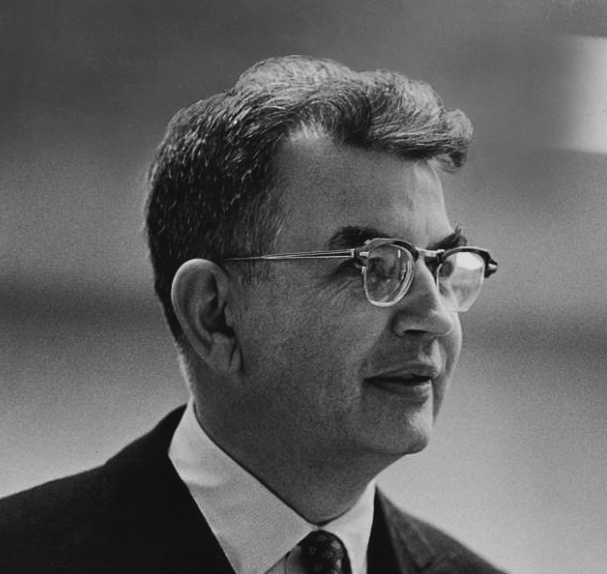
His earliest work criticized the lack of a well-grounded theory of the firm and suggested that accounting methods do not properly measure costs or profits. It also argued that businessmen did not have anything like the information necessary to maximize profits in the MR = MC way that economic theory suggested.
And Coase debunked policy myths about natural monopoly pricing, the necessity of direct state controls (taxes, subsidies, or regulations) to resolve externalities, and the ability of private sector forces to play a significant role in the provision of public goods, such as the lighthouse.
He chastised his fellow economists for playing theoretical games that bore no correspondence to the real world – what Coase labeled “blackboard economics” – and urged them to leave behind the world of high theory in favor of detailed case studies of economic institutions.
Coase showed an increasingly a-institutional profession that institutions matter and that phenomena such as law and the costs associated with coordinating economic activity – at the market level, within the firm, or by the state – play a significant role in determining economic outcomes. He also showed, by extension, that these forces are important variables for decisions about economic policy. In short, Ronald Coase spent a good deal of his career playing the part of a heterodox economist.
This is something of a strong claim, one that will no doubt be questioned by many, mainstream and heterodox alike, who are not familiar with the details of Coase’s life’s work. After all, we are talking about one of the giants of the “Chicago school,” the father of the idea that came to be known as the Coase theorem, and someone who freely admitted that he would have a difficult time coming up with a list of things that the state could do better than the market.
But Ronald Coase was not the Coase theorem, as he noted many times over the last three decades.
Coases’s negotiation result, which George Stigler later gave the name by which we know it today, was developed to show that Pigovian externality theory could not bear the weight of its underlying assumptions, not to suggest that exchange-based solutions for externalities are a panacea. And while Coase embraced the simple analytics of Marshall’s price theory (combined, at times, with opportunity cost reasoning of the LSE variety) he was only too aware that properly putting these analytics to work required that the economist come to grips with the role played by institutions, such as law, in the functioning of markets.
While many of the tributes to Coase that have been written since his death have emphasized his role in the development of “law and economics”, this is in reality a term that, like “Chicago school,” has far more variety in it than commonly realized.
For Coase, “law and economics” was the study of the role played by law in the operation and performance of the economic system – the sort of analysis that formed the bulk of what graced the pages of the Journal of Law and Economics for the first couple of decades of its existence – and Coase stimulated the production of such work both as an author and as an editor of the Journal.
Today, it is with the more narrowly drawn economic analysis of law that Coase’s name is commonly associated. Yet this is a body of work in which Coase had little interest and even less confidence, much to the consternation of his long-time University of Chicago Law School colleague, Richard Posner.
Coase’s attitude here was of a piece with his views regarding the larger expansion of the domain of economics beyond its traditional boundaries. He had no confidence that homo economicus could be successfully exported to other disciplines nor that economists almost wholly ignorant of those disciplines could make useful and lasting contributions to scholarship on those fronts.
Of course, his prediction that this “economics imperialism” would not succeed in the long run has proved to be wide of the mark. Economists have only expanded their sphere of activity in the three-plus decades since Coase penned these remarks, and scholars in other fields have shown increasing willingness to adopt the practices of the economist – or to have the economists join their ranks.
Coase’s call for the profession to move away from the world of the blackboard also has had rather limited success, at least to date. But where he succeeded was in getting economists and policy makers to contemplate the possibilities of the market process in ways that they hadn’t before.
The use of auctions to allocate the frequency spectrum are a direct outgrowth of Coase’s work, as is the development of marketable pollution rights, which though not a direct extension of the Coase theorem – Thomas Crocker and J.H. Dales are to be credited with the marketable pollution rights idea – was influenced by Coase’s negotiation result. Coase’s work in this area began a conversation that forced economists to revisit their traditional views regarding the necessity of direct state controls and, in doing so, opened the door to the consideration of instruments such as transferable pollution rights.
Coase’s many contributions to our understanding of how our economic system operates and the effects of various forms of economic policy, were accomplished with nary an equation. His insights were instead the result of simple intuitive analytics combined with relevant doses of institutional analysis.
That his negotiation result may not have a stable equilibrium solution when specified in a non-cooperative game context or in a general equilibrium competitive system is in some sense neither here nor there, for Coase was not concerned with the ideal optima of economic theory. What he wanted to show was that markets have a tendency to have more going for them than many are willing to admit and that the converse is true of state action.
Policy making, in short, involves choices between very imperfect alternatives, and the only appropriate course of action, for the economist, is to roll up the sleeves, dig into the messy qualitative and quantitative data, and attempt to ascertain the direction in which it points us.
Coase’s work pointed economists toward a different way of going about their business, with sometimes radical implications for economic analysis. It would be unfortunate if, as he sometimes feared, his place in the history of economics were defined by the handful of his contributions that were grafted into mainstream thinking.



